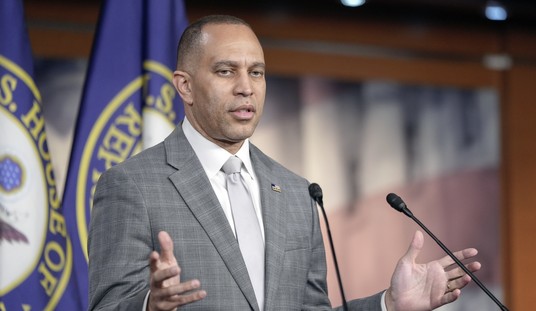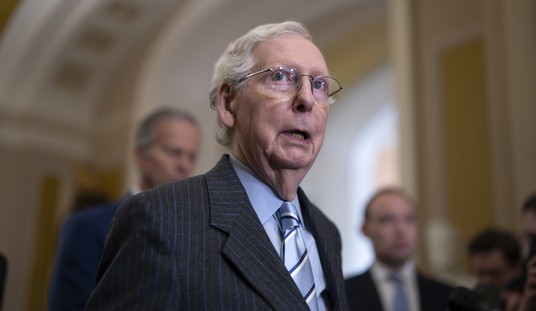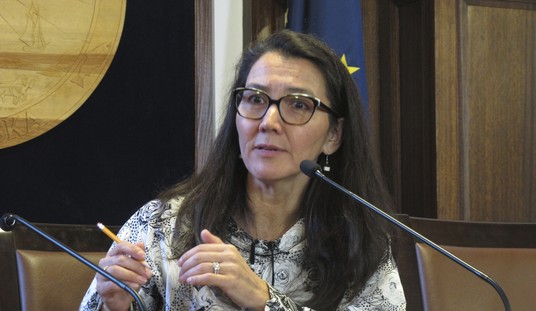Wow. Here’s a link to the Vinson Ruling.
Thoughts: Well, I’ve read the whole thing. This really does hinge on what powers the Supreme Court is willing to grant Congress over the individual. I’m hoping the Supreme Court trims Congress’ wings who in turn should trim the Executive Branches’ wings regarding all their legislation by regulation.
See excerpts and pages below the fold.
[Cross-posted at LibertyPundits]
Pages 1-5: Vinson quotes Madison and Federalist papers. Talks about Framers limiting power:
The Framers believed that limiting federal power, and allowing the “residual” power to remain in the hands of the states (and of the people), would help “ensure protection of our fundamental liberties” and “reduce the risk of tyranny and abuse.” See Gregory v. Ashcroft, 501 U.S. 452, 458, 111 S. Ct. 2395, 115 L. Ed. 2d 410(1991) (citation omitted). Very early, the great Chief Justice John Marshall noted “that those limits may not be mistaken, or forgotten, the constitution is written.” Marbury v. Madison, 5 U.S. (1 Cranch) 137, 176, 2 L. Ed. 60 (1803).
Page 7: Vinson talks about the States “Hobson’s Choice” regarding Medicaid:
The gist of this claim is that because Medicaid is the single largest federal grant-in-aid program to the states, and because the states and the needy persons receiving that aid have come to depend upon it, the state plaintiffs are faced with an untenable Hobson’s Choice. They must either (1) accept the Acts transformed Medicaid program with its new costs and obligations, which they cannot afford, or(2) exit the program altogether and lose the federal matching funds that are necessary and essential to provide health care coverage to their neediest citizens(along with other Medicaid-linked federal funds). Either way, they contend that their state Medicaid systems will eventually collapse, leaving millions of their neediest residents without health care. The state plaintiffs assert that they effectively have no choice other than to participate in the program.
Case No.: 3:10-cv-91-RV/EMT
Case 3:10-cv-00091-RV -EMT Document 150 Filed 01/31/11 Page 7 of 78
Page 12: Vinson’s sympathy for the states:
I appreciate the difficult situation in which the states find themselves. It is a matter of historical fact that at the time the Constitution was drafted and ratified,the Founders did not expect that the federal government would be able to provide sizeable funding to the states and, consequently, be able to exert power over the states to the extent that it currently does. To the contrary, it was expected that the federal government would have limited sources of tax and tariff revenue, and might have to be supported by the states. This reversal of roles makes any state-federal partnership somewhat precarious given the federal government’s enormous economic advantage. Some have suggested that, in the interest of federalism, the Supreme Court should revisit and reconsider its Spending Clause cases. See Lynn A. Baker, The Spending Power and the Federalist Revival, 4 Chap. L. Rev. 195-96(2001) (maintaining the greatest threat to state autonomy is, and has long been,Congress’s spending power and the states will be at the mercy of Congress so long as there are no meaningful limits on its spending power). However, unless and until that happens, the states have little recourse to remaining the very junior partner in this partnership.
[emphasis added]
Page 22: Regarding the Commerce Clause:
The Supreme Court’s first description of commerce (and still the most widely accepted) is from Gibbons v. Ogden, supra, which involved a New York law that sought to limit the navigable waters within the jurisdiction of that state. In holding that “commerce” comprehended navigation, and thus it fell within the reach of the Commerce Clause, Chief Justice Marshall explained that Commerce, undoubtedly,is traffic, but it is something more: it is intercourse. It describes the commercial intercourse between nations, and parts of nations, in all its branches, and is regulated by prescribing rules for carrying on that intercourse.
Vinson, on page 26, admits that the Commerce must not necessarily be limited to this view now, but that’s how it started and is understood.
Page 38 Cites the CBO’s language:
That is because, as Congress’ attorneys in the Congressional Research Service (CRS)and Congressional Budget Office (CBO) advised long before the Act was passed into law, the notion of Congress having the power under the Commerce Clause to directly impose an individual mandate to purchase health care insurance is “novel” and “unprecedented.”
Page 42, BAM:
It would be a radical departure from existing case law to hold that Congress can regulate inactivity under the Commerce Clause. If it has the power to compel an otherwise passive individual into a commercial transaction with a third party merely by asserting — as was done in the Act — that compelling the actual transaction is itself commercial and economic in nature, and substantially affects interstate commerce, [see Act § 1501(a)(1)], it is not hyperbolizing to suggest that Congress could do almost anything it wanted. It is difficult to imagine that a nation which began, at least in part, as the result of opposition to a British mandate giving the East India Company a monopoly and imposing a nominal tax on all tea sold in America would have set out to create a government with the power to force people to buy tea in the first place. If Congress can penalize a passive individual for failing to engage in commerce, the enumeration of powers in the Constitution would have been in vain for it would be “difficult to perceive any limitation on federal power” [Lopez, supra, 514 U.S. at 564], and we would have a Constitution in name only.Surely this is not what the Founding Fathers could have intended.
Page 46 regarding regulating inactivity, Vinson uses an analogy:
First, it is not at all clear whether or why the three allegedly unique factors of the health care market are Constitutionally significant. What if only one of the three factors identified by the defendants is present? After all, there are lots of markets — especially if defined broadly enough — that people cannot “opt out” of. For example, everyone must participate in the food market. Instead of attempting to control wheat supply by regulating the acreage and amount of wheat a farmer could grow as in Wickard, under this logic, Congress could more directly raise too-low wheat prices merely by increasing demand through mandating that every adult purchase and consume wheat bread daily, rationalized on the grounds that because everyone must participate in the market for food, non-consumers of wheat bread adversely affect prices in the wheat market. Or, as was discussed during oral argument, Congress could require that people buy and consume broccoli at regular intervals, not only because the required purchases will positively impact interstate commerce, but also because people who eat healthier tend to be healthier, and are thus more productive and put less of a strain on the health care system. Similarly,because virtually no one can be divorced from the transportation market, Congress could require that everyone above a certain income threshold buy a General Motors automobile — now partially government-owned — because those who do not buy GM cars (or those who buy foreign cars) are adversely impacting commerce and a taxpayer-subsidized business.
Page 53: Addressing the Government’s contention that people “wait out the health market”, essentially timing their purchases:
The problem with this legal rationale, however, is it would essentially have unlimited application. There is quite literally no decision that, in the natural course of events, does not have an economic impact of some sort.
Page 54: Addressing the assertion that the state pays anyway, so individual mandate no biggie:
The defendants thus refer to the failure to buy health insurance as a “financing decision.” However, this is essentially true of any and all forms of insurance. It could just as easily be said that people without burial, life,supplemental income, credit, mortgage guaranty, business interruption, or disability insurance have made the exact same or similar economic and financing decisions based on their expectation that they will not incur a particular risk at a particular point in time; or that if they do, it is more beneficial for them to self-insure and try to meet their obligations out-of-pocket, but always with the benefit of “backstops” provided by law, including bankruptcy protection and other government-funded financial assistance and services.
Page 62: Regarding the Necessary and Proper Clause:
The Necessary and Proper Clause cannot be utilized to “pass laws for the accomplishment of objects” that are not within Congress, enumerated powers. As the previous analysis of the defendants” Commerce Clause argument reveals, the individual mandate is neither within the letter nor the spirit of the Constitution.
Page 63: Another smacking around:
The defendants have asserted again and again that the individual mandate is absolutely “necessary” and “essential” for the Act to operate as it was intended by Congress. I accept that it is. Nevertheless, the individual mandate falls outside the boundary of Congress’ Commerce Clause authority and cannot be reconciled with a limited government of enumerated powers. By definition, it cannot be “proper.”
Page 67: Regarding Severability:
The lack of a severability clause in this case is significant because one hadbeen included in an earlier version of the Act, but it was removed in the bill that subsequently became law.
Page 71: More on why Severing the individual mandate won’t work. It’s all or nothing:
In other words, the individual mandate is indisputably necessary to the Act’s insurance market reforms, which are, in turn, indisputably necessary to the purpose of the Act. This is obviously a very different situation than in Alaska Airlines, Inc., supra, 480 U.S. at 694 n.18 and 696 (unconstitutional provision severed from rest of statute where the provision was “uncontroversial,” and the debate on the final bill demonstrated its “relative unimportance”), and is more in line with the situation alluded to in New York, supra, 505 U.S. at 187 (suggesting by implication that the entire legislation should be struck when “the purpose of the Act is . . . defeated by the invalidation” of one of its provisions).
Page 73, Heartache:
In the final analysis, this Act has been analogized to a finely crafted watch,and that seems to fit. It has approximately 450 separate pieces, but one essential piece (the individual mandate) is defective and must be removed. It cannot function as originally designed. There are simply too many moving parts in the Act and too many provisions dependent (directly and indirectly) on the individual mandate and other health insurance provisions — which, as noted, were the chief engines that drove the entire legislative effort — for me to try and dissect out the proper from
Case No.: 3:10-cv-91-RV/EMT
Case 3:10-cv-00091-RV -EMT Document 150 Filed 01/31/11 Page 73 of 78Page 74 of 78
the improper, and the able-to-stand-alone from the unable-to-stand-alone. Such aquasi-legislative undertaking would be particularly inappropriate in light of the fact that any statute that might conceivably be left over after this analysis is complete would plainly not serve Congress main purpose and primary objective in passing the Act. The statute is, after all, called “The Patient Protection and Affordable Care Act,” not ” The Abstinence Education and Bone Marrow Density Testing Act. The Act, like a defectively designed watch, needs to be redesigned and reconstructed by the watch maker.
Page 76, CONCLUSION: VOID
Because the individual mandate is unconstitutional and not severable, the entire Act must be declared void.













Join the conversation as a VIP Member